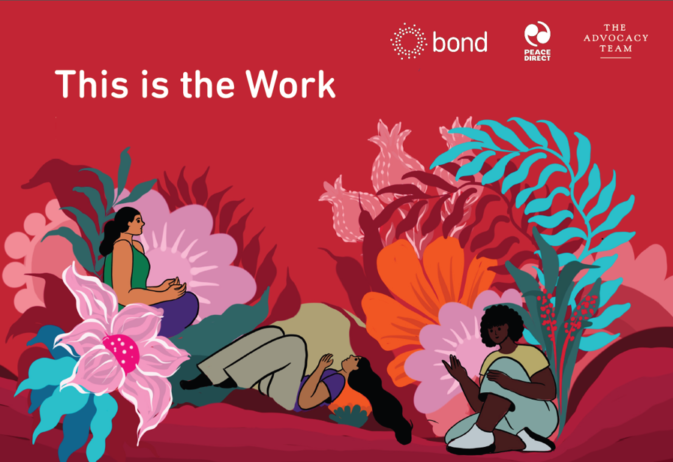New Special Drawing Rights should tackle Covid, not lead to aid cuts or deepen the debt crisis
In late August the IMF is planning on creating $650 billion of Special Drawing Rights (SDRs) to strengthen global financial reserves in response to the ongoing Covid-19 crisis and its economic ramifications.
SDRs are a currency unit created by the IMF which sit in member countries’ reserves. They can free up other funds or be exchanged for hard currency ($, £ etc) to pay for things like imports.
Why are they a development issue?
How countries, including the UK, choose to use these SDRs will have significant consequences for Official Development Assistance (ODA), debt levels, Covid and climate. The SDRs were unexpected, so in a way it is a windfall of additional unbudgeted finance for the UK and other recipients. Therefore, it presents an opportunity to direct finance to the areas it is needed most.
The lion’s share of the new SDRs will go to the main IMF shareholders such as the United States, Japan, China, Germany and the UK. There is a fast-evolving debate about how some countries might voluntarily channel a portion of their SDRs towards lower-income countries, who have greater need of increased financial support and stronger reserves to respond to Covid.
What makes them a debt issue?
The main proposals being discussed at the G7 and G20 are for the UK and others to voluntarily lend their SDRs through the IMF, probably as 0% interest loans. This could happen through existing mechanisms like the Poverty Reduction and Growth Trust and other new trust funds, with a focus on vaccines and climate change.
There is a role for concessional finance in building back better, but there is a bigger question about whether more can be done with these unanticipated additional resources, particularly in the context of a debt crisis in many lower income countries.
The G7 Carbis Bay communique supported the goal of reallocating $100 billion of SDRs, but this shouldn’t just be $100 billion of new debt.
Subscribe to our newsletter
Our weekly email newsletter, Network News, is an indispensable weekly digest of the latest updates on funding, jobs, resources, news and learning opportunities in the international development sector.
Get Network NewsCAFOD is already campaigning for debt cancellation. Lending a portion of SDRs to facilitate IMF loans should not be their main use. Not only will it increase debts, but there are grave concerns over IMF conditionality and questions over whether the IMF is the best placed institution to tackle the pandemic or climate change.
As Martin Wolf said in a recent Financial Times column “low-income countries should not be asked to borrow, even on concessional terms” because “bringing the pandemic under control is a global public good, which must be delivered by grants from rich countries”.
A recent commentary from credit rating agency Standard & Poor’s expects SDRs to be lent through the IMF and notes this would “increase already high debt levels in LIC, albeit at 0% rates” which could damage “longer-term debt sustainability”.
Liam Byrne MP, Chair of the international Parliamentary Network on the World Bank & IMF said during the recent parliamentary debate on aid cuts that when it comes to channelling SDRs from the UK “we need to maximise the amount of money that goes into grant rather than soft loans”.
What else could we do with SDRs?
At CAFOD, we have explored some of the other options that might be open to lower income countries in a new discussion paper and found plenty of technical complexity. It all hinges on political decisions on how the UK chooses to use the foreign currency and SDRs in its reserves. It is possible for the UK to use its SDRs to enable grants rather than loans. When the SDRs boost the overall reserves this Autumn the UK could sell some of its US dollar reserves to free up British pounds.
This would enable the UK to make grant contributions to tackle Covid through mechanisms such as COVAX and C-TAP. This would speed up the roll out of global vaccinations and slow the mutation of new variants.
The UK and other richer nations could also immediately increase their climate finance around COP26 by making donations to existing mechanisms like the Green Climate Fund and the Adaptation Fund.
How are the SDRs related to the aid cuts?
The central issue over SDRs is how quickly they can be deployed to tackle the Covid and climate crises, but there is the concern about whether SDRs would be counted as ODA and would come from the UK’s 0.5% budget.
In the last few years the UK has lent £4.4 billion worth of SDRs through the IMF’s Poverty Reduction and Growth Trust. Under OECD DAC rules the UK, and lots of other countries, are allowed to count a percentage of these loans as ODA. The UK has typically counted these within its 0.7% reporting.
Using SDRs to displace existing aid commitments is inconceivable during a global crisis and following on from the vast cuts already made this year. We must do all we can to ensure that the government deploys SDRs as an additional funding mechanism to existing UK aid commitments.
Category
News & ViewsThemes
Politics



